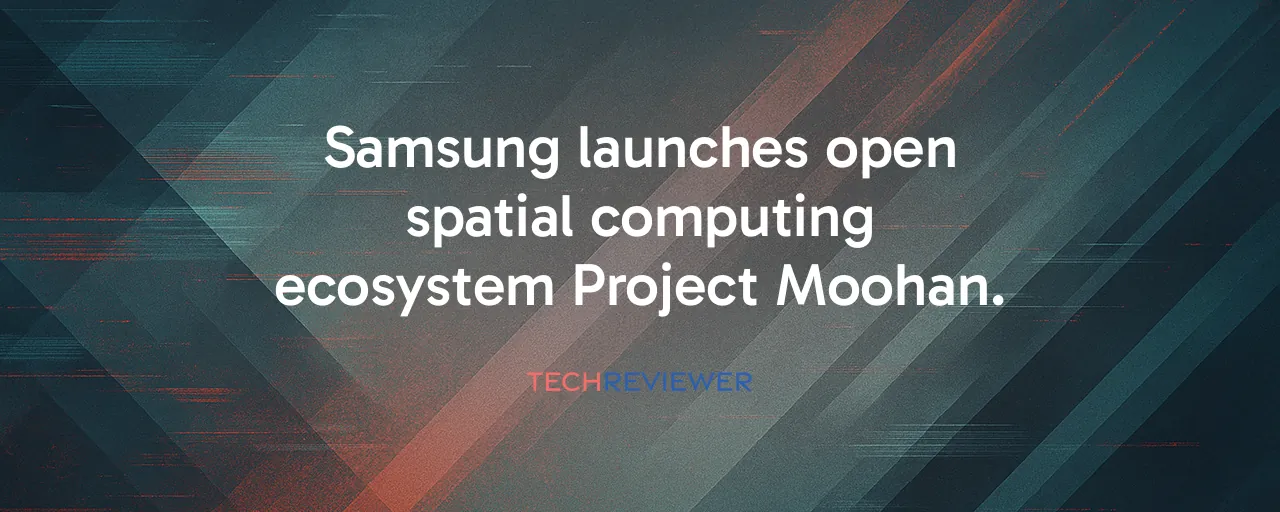A New Player in Spatial Computing
Samsung unveiled Project Moohan at its Galaxy Event on October 21, 2025, marking the company's entry into the spatial computing market. The launch introduces dedicated hardware for Google and Qualcomm's Android XR platform, positioning Samsung to gain early traction before Apple's Vision Pro achieves broad adoption. By partnering on an open platform, Samsung aims to foster a flexible ecosystem that supports developers and manufacturers, offering an alternative to Apple's closed visionOS approach.
The timing of the launch is strategic. Apple's Vision Pro, priced at $3,499, has seen limited sales, with fewer than 370,000 units sold globally by Q3 2024. Samsung is targeting the mid-to-premium range with a rumored price between $1,800 and $2,800, aiming to attract both enthusiasts and businesses seeking high-end features without Apple's premium cost.
Learning From Past XR Efforts
Earlier XR initiatives faced significant challenges. Google's Daydream, launched in 2016, relied on smartphones inserted into headsets but was discontinued by 2019 due to performance limitations and the rise of standalone devices like Meta's Quest. Samsung's own Gear VR declined as dedicated hardware improved. With Moohan, Samsung avoids these pitfalls by using dedicated hardware powered by Qualcomm's Snapdragon XR2+ Gen 2 chip, which supports 4.3K resolution per eye and integrates with Google's Gemini AI.
Apple's Vision Pro delivered high-end micro-OLED displays but struggled with content availability and user comfort. Enterprises, however, found value in its use for training and design, with retailers like Lowe's expanding deployments for kitchen visualization across 400 stores. Samsung has incorporated these insights, designing Moohan to support enterprise collaboration while offering consumers immersive YouTube viewing and Google Maps navigation. A robust content library and versatile hardware are essential for early adoption.
The Power of an Open Ecosystem
Samsung's key advantage with Moohan is its foundation on Android XR's open architecture. Unlike Apple's tightly controlled visionOS, Android XR enables developers to use tools like Unity and Unreal Engine to build apps that run across multiple devices. Existing Android applications can appear in XR environments with minimal adjustments, significantly expanding the available content at launch. Integration with Google Workspace allows users to manage Gmail notifications and collaborate on documents in spatial environments.
This open model mirrors Android's success in the smartphone market, where multiple manufacturers helped scale adoption and reduce costs. Companies like Xiaomi may adopt Android XR, forming a broader coalition against Apple and Meta. However, openness introduces risks. Fragmentation could emerge if device capabilities vary widely, so Samsung and Google must maintain consistent standards to support developers and ensure a reliable user experience.
Real-World Impact and Challenges
Moohan shows strong potential across industries. In healthcare, XR is improving surgical training and therapy, with studies showing VR enhances learning outcomes compared to traditional methods. Enterprises benefit from virtual workspaces, as demonstrated by Vision Pro's use in product design. Consumers can access immersive gaming and virtual travel, with titles like Vacation Simulator already adapting to Android XR. However, challenges remain. At 545 grams, Moohan is lighter than Vision Pro but extended use may still cause discomfort. Battery life is limited to about two hours, restricting all-day usability.
Privacy is a critical concern. Moohan's eye-tracking and environmental mapping collect biometric and spatial data, raising risks around user identification. Research indicates that just two seconds of eye movement data can uniquely identify individuals, which is a vulnerability that requires strong on-device privacy protections. There are also societal concerns, as high costs could limit access in education and deepen digital divides despite XR's potential for immersive learning.
What's Next for XR's Evolution
Samsung's Moohan is an important step, but the XR landscape remains competitive. Analysts project the global XR market will reach $100 billion in 2025, with VR headset sales growing at 23.2% annually through 2030. Samsung's challenge is sustaining momentum. Developers need compelling incentives, and users need experiences that justify the investment. Google's Gemini AI, which enables natural language interaction and contextual support, could make Moohan more accessible to new users.
Looking ahead, industry experts are debating the long-term role of headsets like Moohan. Some believe lightweight AR glasses will eventually dominate, while others see immersive headsets maintaining relevance for gaming and training. Regardless, Samsung's open approach, backed by Google and Qualcomm, positions it to influence XR's development. If Moohan delivers on its promise, it could help establish a future where spatial computing is defined by openness and accessibility.
